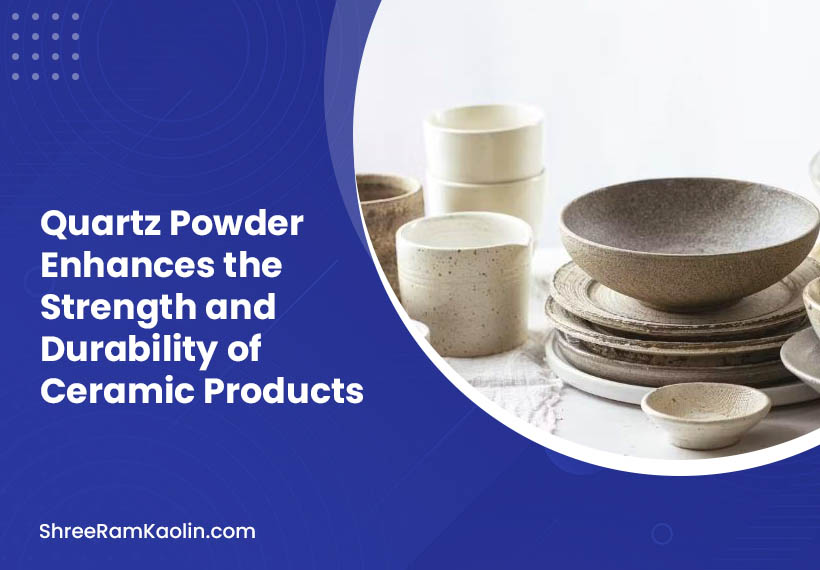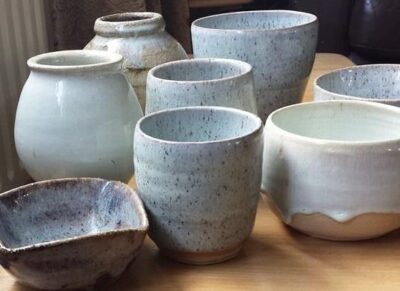How Quartz Powder Enhances the Strength and Durability of Ceramic Products

Quartz powder is often overlooked when discussing ceramic products and processes. But this article explores its immense contributions in increasing strength and durability of ceramic items.
What is Quartz Powder?
Quartz, an inert mineral composed of silicon and oxygen, can be ground into fine powder form for use in various industrial applications; specifically ceramics. Quartz’s inherent hardness and chemical inertness make it the ideal material to extend product longevity.
Why Use Quartz in Ceramics?

Quartz powder used as part of ceramic materials significantly improves their mechanical properties, increasing toughness and durability while making the ceramic suitable for higher stress applications such as tile flooring or high-end pottery.
The Role of Quartz Powder in Ceramic Manufacturing
Quartz acts as a critical strengthening agent within the matrix of ceramic products.
How Quartz Powder Increases Durability
By meshing seamlessly with ceramic components, quartz powder helps in distributing stress evenly throughout the object. This uniform stress distribution is crucial for enhancing overall structural integrity.
The Science Behind Quartz Strength
On the molecular level, quartz particles interlock with ceramic particles, leading to increased fracture resistance. This microstructural bonding is key to the improved toughness of the ceramic items.
Enhancing Ceramic Durability
The longevity of ceramic products is paramount in industries where durability translates into cost-effectiveness and sustainability.
Long-term Benefits of Quartz in Ceramics : Using quartz not only improves the product’s lifespan but also its resistance to wear and tear, making it an economical choice for manufacturers and consumers alike.
Case Studies and Real-World Applications : Examples from industry leaders demonstrate the significant improvements in durability and strength in ceramics made with quartz powder.
The Manufacturing Process
A detailed look at how quartz is integrated into the ceramic production line.
Mixing Techniques
Proper preparation and mixing of quartz with ceramic materials are vital to achieve the best outcomes.
Preparing Quartz for Mixing : The process starts with the purification and fine grinding of quartz which is then carefully measured and mixed with other ceramic ingredients.
Best Practices in Material Blending : Maintaining an even and fine mixture is crucial to the quality and characteristics of any final product.
Firing and Sintering
Quartz plays an essential role during the firing phase of ceramic manufacturing.
Role of Quartz During Firing : It helps in the transformation of ceramics from a porous to a densified, mechanically strong state.
Sintering at High Temperatures: Quartz influences the sintering temperature and time, optimizing both to enhance the final product’s mechanical properties.
Comparative Analysis
How does quartz stack up against other ceramic strengthening agents?
Performance Comparison : Tests and data show that quartz often outperforms many other additives in similar applications.
Cost-Effectiveness : Despite its many benefits, quartz remains an economically viable option for many ceramic manufacturers.
Innovative Uses of Quartz in Ceramics
Exploring cutting-edge applications and future potentials of quartz in ceramics.
Advanced Ceramic Products
From aerospace components to biomedical implants, high-precision products rely increasingly on quartz.
Future Trends in Quartz Utilization: Innovations in quartz technology may open new avenues in ceramic design and functionality.
Environmental and Safety Considerations
A responsible look at the ecological and health aspects of using quartz in ceramics.
Ecological Impact of Using Quartz
Addressing concerns related to quartz mining and its environmental footprint.
Health and Safety in the Workplace : Ensuring safe handling and processing practices to protect workers from silica dust and other hazards.
FAQs
What makes quartz powder ideal for use in ceramics applications?
Quartz powder’s combination of high melting point, hardness, and chemical inertness make it the ideal material to increase strength and durability of ceramic products.
How does quartz powder increase ceramic durability?
Quartz powder helps extend ceramic products’ longevity by strengthening its resistance to physical wear and thermal strain.
Can quartz powder be utilized across all ceramic applications?
Yes, quartz powder can be utilized in numerous ceramic formulations from building materials to delicate porcelains.
Are there environmental benefits associated with using quartz powder in ceramics?
Quartz is an abundant natural material with minimal processing needs, making it a sustainable solution for environmentalists.
What are the challenges associated with using quartz powder in ceramics?
The main challenges when working with quartz powder include maintaining purity and particle size as well as controlling its abrasive nature which could damage equipment used to manufacture ceramic products.
Conclusion
Quartz powder is more than just filler; it plays an integral part in modern manufacturing by increasing strength and durability of ceramic products. Quartz is one of the essential resources needed for modern production lines.

